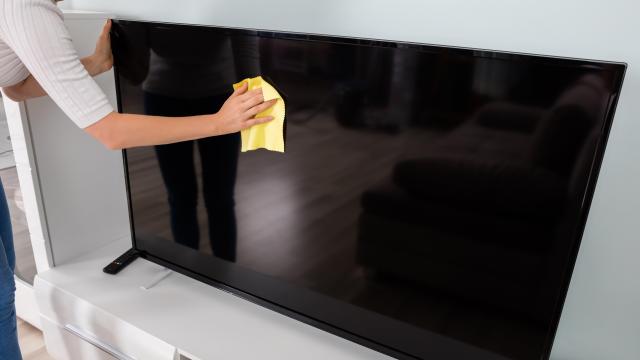I’m going to admit upfront that I’m a big Windex girl. It’s cheap, it’s always available, and it’s easy to spray on everything from mirrors (normal!) to tabletops (nor normal!) for a quick rubdown. It turns out, though, that you’re really not supposed to use the specialty glass cleaner for everything, as it can cause real damage to certain surfaces. Here’s what you should really avoid spraying.
Plexiglass
This is a surprising one, but you can’t use Windex on Plexiglass, so if you have any art framed in some or any other decor made from it, put the bottle down. Per Reader’s Digest, some Windex products contain ammonia, which will ruin the material. You can use the ammonia-free version, but you have to make sure that’s what you have.
Scummy shower doors
Reader’s Digest also cautions against using Windex on shower doors, of all things, if the doors are full of soap scum. Windex just doesn’t break that down well. The good news is you can just use regular old dish soap or a Mr. Clean Magic Eraser to get the scum off. Prevent scum altogether by keeping a dish wand filled with dish soap in the shower and using it to clean the interior every time you take a rinse yourself. Once your shower doors are free of gunk, you can use Windex, but you probably won’t even have to.
TV screens
Windex is no good for cleaning your television screen (or any tech screen, really). According to CNET, it can easily permanently damage the screen because modern televisions have special coatings on them, and those will be worn down by anything too strong. Dilute dish soap in water and use a microfiber cloth. Here’s our full guide to safely cleaning a TV, which doesn’t include Windex unless you have an old television with a plain glass screen.
Granite countertops
Porous countertop materials, like granite and marble, shouldn’t be cleaned with Windex or anything else that’s harsh. They are delicate, even though they seem so sturdy. Harsh chemicals can seep into the pores and leave stains or even break down the sealant on the top. Again, you should be using dish soap diluted in water or even a paste of baking soda and water if you have major stains to remove. If your sealant is already broken down (whether because of Windex or not) you can get it resealed, which you should do every four years or so.
Unsealed wood
Per Apartment Therapy, Windex is fine in small doses on hardwood surfaces, but those need to have thick finishes and sealants. If you have a plain, unvarnished shelf or table, Windex can actually stain it, which is counterproductive. Stick with soap and water.
Car glass
Don’t risk your auto glass with Windex, either, according to Glass Doctor. The possibility of ammonia is too great — and that’s no good for your tint, which it can break down. Plus, it’s harder to get a streak-free finish with regular glass cleaner than it is with a specialty kind made for cars, but it’s not worth the risk anyway.

Leave a Reply
You must be logged in to post a comment.